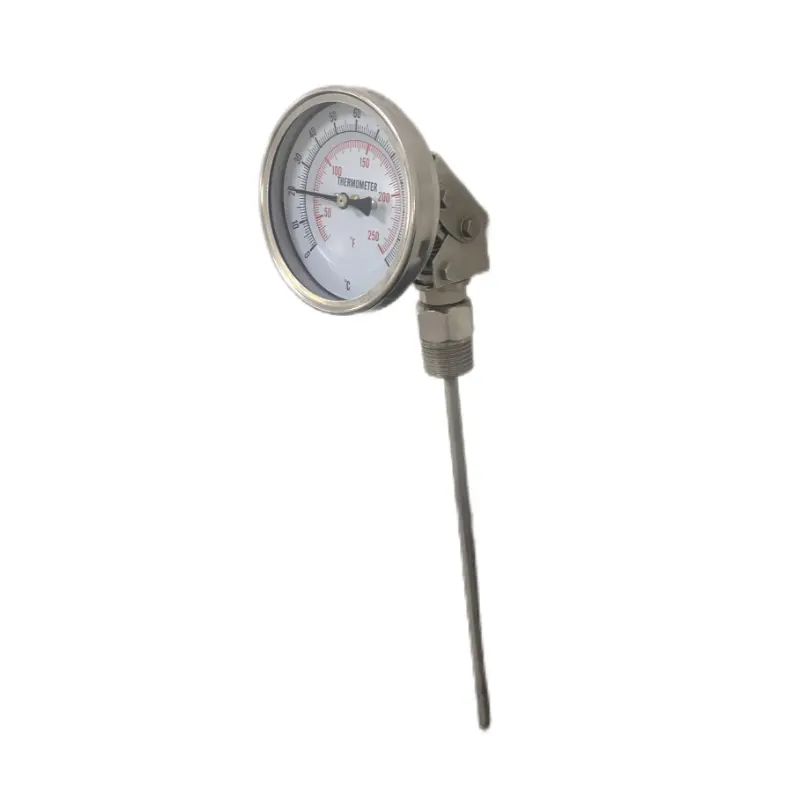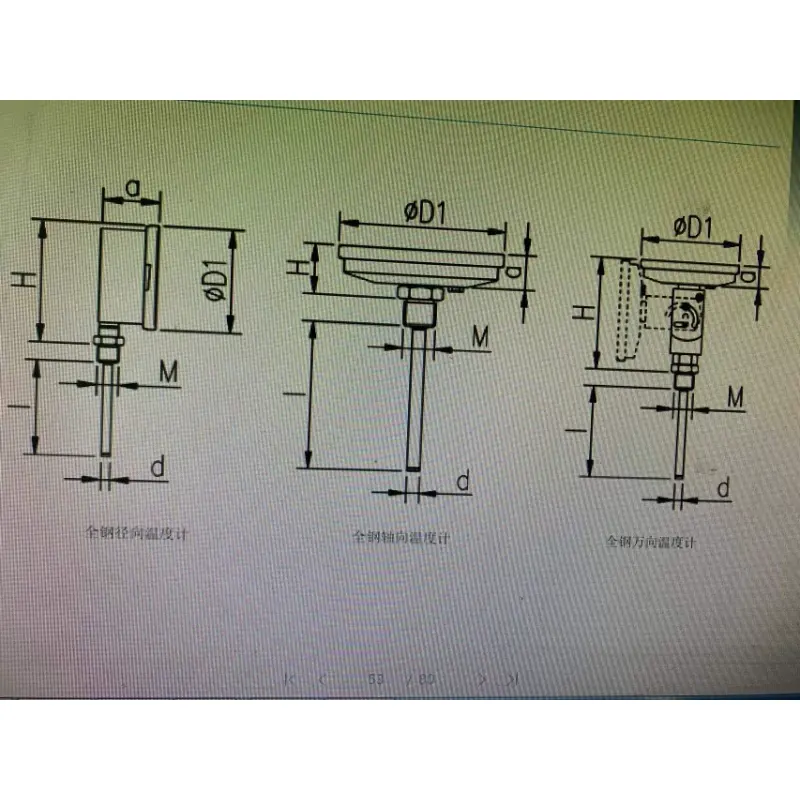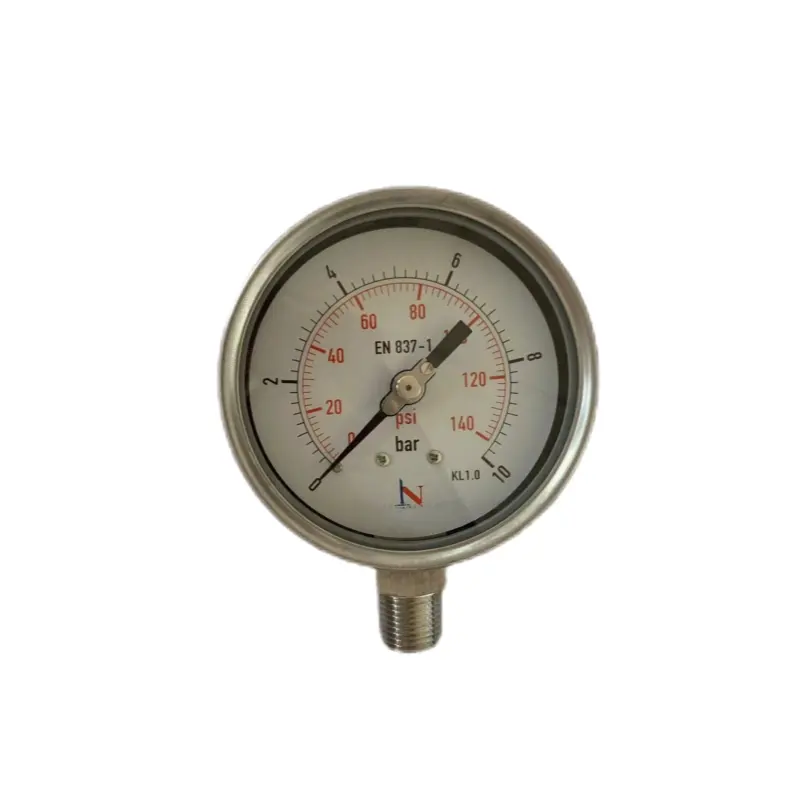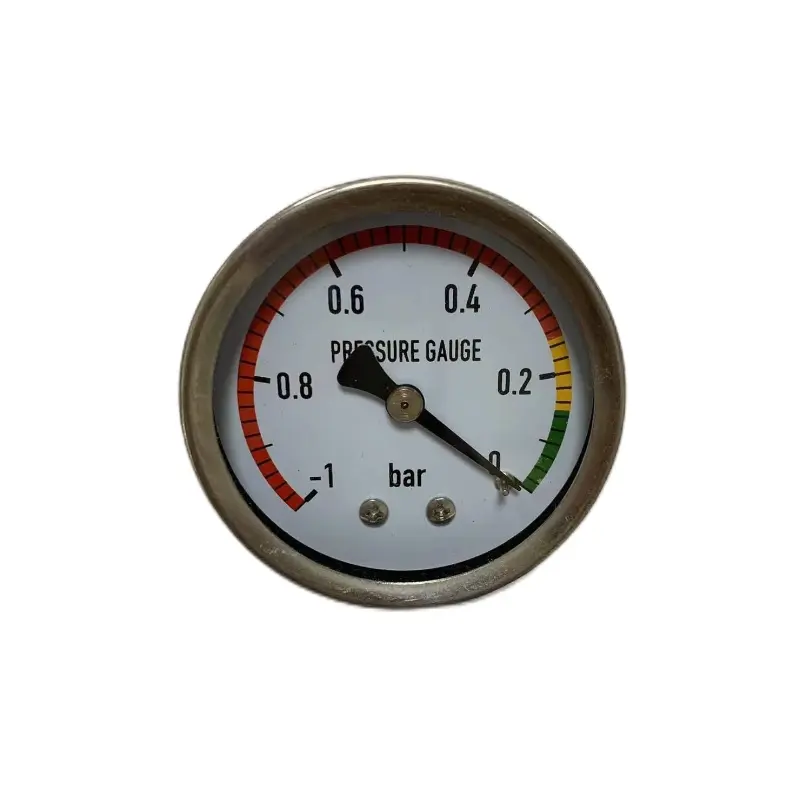What are the advantages of stainless steel bimetal thermometer?
Release time: 2024-10-30

Feature
- Widely application:
- Bimetal thermometers can be used in various working conditions, such as high temperature, low temperature, corrosive media, etc., and can meet the temperature measurement needs in different fields.
- Mercury free:
- It can replace industrial liquid-in-glass thermometers in many situations.
- Accurate and reliable:
- The stainless steel dial pointer bimetallic thermometer adopts mechanical transmission, does not require external energy supply, and the measurement results are accurate and reliable, and are not easily affected by external interference.
- Simple structure:
- Bimetal thermometers have a relatively simple structure, low manufacturing costs, easy maintenance, and high cost-effectiveness.
- Strong durability:
- Bimetallic thermometers are usually made of stainless steel or other corrosion-resistant materials, with strong corrosion resistance and durability. Stainless steel bimetallic thermometers can adapt to harsh working environments, especially in places with corrosive gases, liquids or high humidity, such as chemical, pharmaceutical, food processing and other industries.
- Wide temperature range:
- The measurable temperature range of bimetal thermometer is relatively wide, and it can meet the requirements from low temperature to high temperature.
Technical Parameter
| Name | What are the advantages of stainless steel bimetal thermometer? |
| Application | 1, Oil industry,Machinery Industry, 2, Printing&Dyeing industry, 3,Metallurgical Industry, 4, Boiler Industry |
| Nominal size(mm) | Φ40mm,50mm,63mm,80mm,100mm, 150mm(1.5”, 2”,2.5”,3.5”,4”,6″) |
| Scale ranges | -20℃-600℃ |
| Case Type | Bayonet ring bezel or crimped ring bezel, stainless steel |
| Wetted Part | 304 Stainless steel( 316 Stainless steel optional) |
| Connection material | 304 Stainless steel(316 Stainless steel optional) |
| Connection size | 1/4”, 1/2” 3/8” |
| Connection type | BSP/NPT/PT |
| Rod length(mm) | 50,120.150 etc |
| Rod diameter(mm) | Φ6,8,10 etc |
| Window | Glass, tempered glass or pc |
Bimetal Thermometer Type: Axial, Radial, Universal



